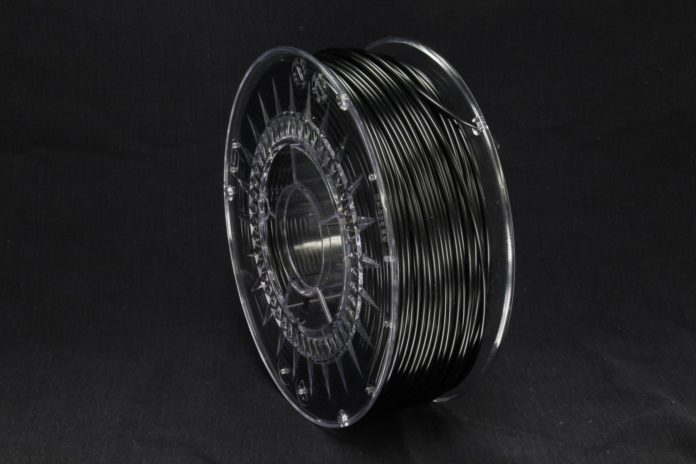As the saying goes, “actions speak louder than words” and when you find a company that is implementing tangible actions to address a given issue, you have to give them credit and recognize their combat. In this industry, one of these companies is Polymaker, the materials company that recently unveiled PolyTerra™ PLA , a 3D printing filament with less environmental impact and that is planting one tree to offset the carbon created in the manufacturing and shipping of each sold spool.
Another step towards a sustainable environment is seen today in the development of another material, the Polymaker™ PC-r, a polycarbonate filament for 3D printing made from recycled plastic. To develop this material, the company uses a recycled polycarbonate from Covestro, another specialty chemicals company that ambitions to be fully circular by 2025.
Covestro said the material comes from 19-liter bottles from Chinese water supplier Nongfu Spring, which contain polycarbonate in a fairly pure form. To enable Polymaker to use it, the plastic material has been blended with virgin material to obtain a polycarbonate base which can be extruded into filaments for use in electronics automotive and other industries.
Compared to virgin material, the filament using recycled material has a lower carbon footprint. The product is also more durable and meets industry-specific requirements such as the Blue Angel and EPEAT seal.
The fact that the waste comes from one single source is an advantage. This means that no prior sorting and identification of the plastics is necessary. The plastic waste is quite pure and can be recycled in a cost-effective manner. In addition, it is available in sufficient quantities. In China, large-volume water bottles are widespread in private households and public places. These are collected and refilled again and again before finally discarded and sent for recycling. This is another example of how Covestro is helping to build a circular economy in collaboration with partners along the value chains.
The material has already been tested on INTAMSYS’s FUNMAT PRO 410 printer, a printer that can achieve a dual jet temperature of up to 500°C and a platform temperature of up to 160°C. The chamber temperature can be up to 90°C, which prevents warping of printed parts and allows larger and more complex models to be printed more successfully. Results reveal good values for tensile strength, Young’s modulus, flexural strength and flexural modulus, which were slightly higher than standard polycarbonate.
The announcement follows the release of the first 3D printing material developed by Covestro’s new subsidiary, DSM.
Remember, you can post free of charge job opportunities in the AM Industry on 3D ADEPT Media or look for a job via our job board. Make sure to follow us on our social networks and subscribe to our weekly newsletter : Facebook, Twitter, LinkedIn & Instagram ! If you want to be featured in the next issue of our digital magazine or if you hear a story that needs to be heard, make sure to send it to contact@3dadept.com


